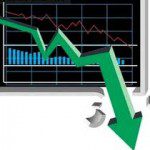There are two market warning signs which have just recently been triggered and  which have gotten a lot of press attention due to their catchy names – the Titanic Syndrome and the Hindenburg Omen – both of which are giving a “preliminary sell signal” based on analyses of 52-week New Lows (NL) in relation to New Highs (NH) on the NYSE within a specific period of time.
which have gotten a lot of press attention due to their catchy names – the Titanic Syndrome and the Hindenburg Omen – both of which are giving a “preliminary sell signal” based on analyses of 52-week New Lows (NL) in relation to New Highs (NH) on the NYSE within a specific period of time.
So writes Tom McClellan (www.mcoscillator.com) in edited excerpts from his original article* entitled Hindenburg and Titanic, OH MY!.
[The following article is presented by Lorimer Wilson, editor of www.munKNEE.com and may have been edited ([ ]), abridged (…) and/or reformatted (some sub-titles and bold/italics emphases) for the sake of clarity and brevity to ensure a fast and easy read. This paragraph must be included in any article re-posting to avoid copyright infringement.]
McClellan goes on to say in further edited excerpts:
The Titanic Syndrome
The Titanic Syndrome was created in 1965 by the late Bill Ohama. It gives a “preliminary sell signal” anytime that the number of 52-week New Lows (NL) exceeds New Highs (NH) on the NYSE within 7 trading days before or after a major market high.
The top of the chart below shows all of the instances since 1984 of these preliminary sell signals firing off. You can see that they do tend to cluster around major tops, but they also seem to cry “wolf” a lot at other times when an uptrend continues. Ohama noticed that too, and so he added further criteria to constitute what he called “additional evidence”. He wanted to see NL exceed NH for 4 out of 5 days, plus NH declining to less than 1.5% of total issues, and finally to have the DJIA (or SP500) decline for 4 out of 5 days. We now have 2 out of those 3 criteria met, but have not seen the DJIA or SP500 drop for 4 of 5 days.

The Hindenburg Omen
In 1995, mathematician and market analyst Jim Miekka created a similarly ominous signal that came to be known as the Hindenburg Omen. It too looks at NH and NL, and was an adaptation of Gerald Appel’s “Split Market Sell Signal”. Appels signal was simply a case of seeing both NH and NL exceed 45, with no adjustment for changes in the number of issues traded. Miekka refined it by adding a few additional rules to get a more quantified signal.

Initially, Miekka set a threshold that both NH and NL had to exceed 2.2% of total NYSE issues on the same day. He later adjusted that up to 2.8% of Advances plus Declines after decimalization changed the way that issues traded, and reduced the number of unchanged issues each day. In addition, the NYSE Comp has to be above its value of 50 trading days ago, and the McClellan Oscillator has to be negative.
You may see web sites that list different criteria, based on Miekka’s earlier writings. The criteria I use are as Miekka himself reported to Greg Morris for Morris’ 2006 book, The Complete Guide to Market Breadth Indicators. Using the original 2.2% threshold, there have been 4 Hindenburg Omen signals between May 29 and June 4, 2013. Using the more up to date 2.8% threshold, there have been only 2, but that is still a significant alert to get our attention. For more on the calculations and the differences in criteria, see this 2010 article…
The logic of why it would be important to have NH and NL both at a high level at the same time is that it can be a sign of rotation of leadership, and that can be a topping indication. It does not have to be one, but it can.
Like the Titanic Syndrome, the Hindenburg Omen does give signals at some times that are not as important as others but what is important is that it has not failed to fire off a signal ahead of all of the major price declines of the past 30 years. So if one can live with a signal that cries “wolf” some of the time, then it can be a useful message to receive. It is especially useful when it gives a signal more than once within just a few days.
John Bollinger, who created Bollinger Bands, has a good way of describing both of these indications. Rather than thinking of them as “signals”, it is perhaps better to think of them as “alerts”. Each can be useful for getting one to pay more attention to bearish signs in other charts and indicators, even as one retains the knowledge that it could turn out not to lead to a big selloff every time.
The attention that each has gotten lately from the financial media is great proof that a cataclysmic sounding brand name is better for getting attention.
[Editor’s Note: The author’s views and conclusions in the above article are unaltered and no personal comments have been included to maintain the integrity of the original post. Furthermore, the views, conclusions and any recommendations offered in this article are not to be construed as an endorsement of such by the editor.]
*http://pragcap.com/hindenburg-and-titanic-oh-my (© Copyright 2013 — PRAGMATIC CAPITALISM. All Rights Reserved)
Related Articles:
1. These 5 Leading Investment Indicators Suggest the Stock Market Is OVERvalued – Take a Look
We have been in the throes of a secular bear market, subject to strong cyclical swings in either direction, since 2000. Currently, based on the 5 leading investment indicators analyzed in this article, the measures all confirm that, from a longer-term perspective, the market remains overvalued. Let’s take a look at each to see why that is the case. Read More »
2. Here’s How to Crash-Proof Your Portfolio
With the stock market seemingly reaching new highs every day, should we worry about a crash that puts an end to the party? If so, how should investors prepare? Let us explain. Read More »
3. What Does Stock Market Valuation Multiple Suggests for Future of S&P 500?
“The end is near” has been the bears’ dire prediction since the start of the bull market on March 9, 2009. This year’s rally to new record highs suggests that the bears have lost their credibility and that investors are becoming increasingly convinced that the end is actually still far off. Read More »
4. Wall Street Claims Secular Bear Market in US Stocks Is Over – Is It Justified?
Two charts today, both from Goldman Sachs, focusi on US equity valuations and suggest that the secular bear market in US stocks is over. Are we really experiencing an historical anomaly that falls into a “this time is different” narrative or is the current secular bear market not over just yet? Read More »
5. It’s Time to Apply the “Greater Fool Theory” and Sell Your Winners to All Those Fools
The Dow has surpassed its all-time record high – set in October 2007 – and the S&P 500 is not far behind? Is this the early stage of another great bull market? Let’s look back at the two previous times when the S&P 500 set new all-time highs and see if we can learn something. Wait…first put your “this time it’s different” glasses on. OK, let’s go. Words: 430; Charts: 1
6. Don’t Ignore This Fact: “Greedometer Gauge” Signals S&P 500 Drop to the 500s by July-August, 2013!
The S&P500 is likely to achieve a secular (long term) peak this month, then drop to the 500s by July-August 2013. This article explains why. Words: 180
7. This Metric Strongly Suggests a Major Correction in the S&P 500 Could Be Coming
History shows that when investors experience a rapid decline in the amount of available cash in their brokerage account to spend/invest quickly such “negative net worth” leads to major corrections in the stock market. Currently such is the case so can we expect another such decline or will it be different this time?
8. Watch Out For Falling Stocks! Here’s Why
The stock markets make no sense. They have literally lost touch with reality. Divergences between fundamentals, confidence and the valuation of markets are large [and, as such,] cannot last for long….The only question is how…and how quickly….this correction occurs. Words: 261
9. S&P 500′s PEG Ratio Suggests Overvaluation & Coming Correction
The S&P 500 index is trading at record high levels and optimism remains high with Barron’s professional money manager survey indicating a record 74% money managers being bullish on markets even at current levels. [When one] measures valuations with respect to expected growth, [however, the ensuing ratio, the PEG ratio,] suggests overvaluation at these levels. [Let me explain further.] Words: 254; Charts: 1 Read More »
10. Can S&P 500 Justify Current Level With Earnings Growth So Weak?
The S&P 500 is trading at near record high levels on the back of liquidity glut in the financial system. I mention the liquidity factor because all other fundamental factors do not support current levels and valuations. Read More »
11. You Need to Stay in the Stock Market Despite an Impending Economic Collapse – Here’s Why
You need to stay in markets despite an impending economic collapse. [Really?! Yes, really.] Normally such an expectation would be addressed by getting out of the way of the oncoming disaster and taking ones chips off the table [but,] in this situation, there is no place to hide. Low-risk assets, like bonds and near-cash, produce little to no return…and the threat of rising interest rates and inflation make them dangerous. Higher risk assets are unavoidable, given current conditions. [Let me explain further.] Words: 830
12. You Can Insure Your Portfolio From Potential Capital Loss – Here’s How
Most everything you’ve heard about investing from the mainstream media, your mutual fund advisor and your tax accountant is a lie. You’ve been told…that the entire point of portfolio diversification is to mitigate downside risk yet when the market experiences the inevitable decline, every sector pushes significantly lower – and your “diversified” portfolio suffers as a result, [right? Well, there IS a better way.] Hear me out. Words: 895
13. The U.S. Stock Market Is Overvalued By More Than 50%! Here’s Why
Key stock indices are becoming significantly overpriced. The value of the U.S. stock market stands at about 133% of GDP. The average for the past 60 years has been around 82%. By this measure, the U.S. stock market is overvalued by more than 50%! Words: 398
14. Stop! Don’t Forget Market Risk – Remember What Happened in 2000 & 2007/8.
Investors are more bullish now than at any time since 2002 but the current rally has not been fueled by improved prospects of actual growth and wealth creation. Instead, it’s mostly due to:
- investors desperate for income denied them elsewhere by central bank policies;
- printed stimulus cash seeking a home and
- sheer technical momentum
but nowhere do they seem to be considering market risk – the risk that your investment will lose value because it gets dragged down in a falling market. Words: 615
15. Ignore Wall Street Cheerleaders: Market Technicals, Fundamentals & Other Info Says Otherwise!
[In spite of what] the typical Wall Street cheerleaders, I mean strategists, are predicting, we see the equity market ever more closer to its cyclical top, miners about to retest a major bottom and hard assets with a new catalyst. [This article analyzes 9 pieces of information, complete with charts, that show what is actually going on in the marketplace at this point in time and what the short-term future holds.] Words: 930; Charts: 816. 5 Sound Reasons Investors Would Be Better Off On the Sidelines Than In the Market
New year festivities have continued on the stock market even as the Christmas trees have been put away. The “death of the fiscal cliff,” not horrible job numbers and supportive comments from Mario Draghi on the other side of the pond have led to bold and bullish behaviors over the last three weeks. While no one can predict the exact peak, here are five reasons you’re better off on the sidelines than in the market.
17. These Charts Suggest a Possible +/-60% Decline in the S&P 500 by 2014
J.P. Morgan Asset Management has developed a chart showing the past two cycles in the S&P 500 highlighting peak and trough valuations. At face value it is very alarming as it suggests a potential decline of somewhere in the vicinity of 60% over the next year or two and concurs with previous innovative trend analyses included in this article. Charts: 4
18. Current Market Overvaluation (from 33% – 51%!) Suggests Cautious Long-term Outlook
Based on the latest S&P 500 monthly data, [my analyses indicate that] the market is overvalued somewhere in the range of 33% to 51%, depending on which of 4 indicators I used. This is an increase over the previous month’s 31% to 48% range. [Let me explain the details.] Words: 475
19. Goldman Sachs’ Leading Indicators Signal Steep Market Crash Ahead
Goldman Sachs reports their Global Economic Indicators (GLI) show the world has re-entered a contraction and…is predicting a market crash worse than that of the early 90′s recession and one slightly less than the sell-off at the turn of the millennium. [Below are graphs to support their contentions.] Words: 250
 munKNEE.com Your Key to Making Money
munKNEE.com Your Key to Making Money





I like the usage of the word “Alerts”, because it better describes potential warnings that all investors should heed! Like the weather the market can go wild at any time but unlike the weather, the market can be gamed (unless you believe in weather modification) which can then be used to fool those market observers into making wrong decisions. I believe that we re now in a period of market modification or perhaps manipulation is a better word, by the Central Banks along with their friend the Big Banks.
+
I posted this yesterday but feel it is worth posting again:
The majority of the Public will soon wake up and join the rush to return to PM’s, as investors realize that they have been played by the Central Banks in the name of Fiscal Recovery (Theirs Not Ours)…
I posted this yesterday:
Beware all those that encourage you to divest your PM’s just because the Central Bankers are fiddling with the charts most use to track the relationship of PM’s to the US$.
I believe we are seeing a Global effort to drive PM’s downward so that the big Central Banks can scoop most of it up at bargain prices, so they can further promote the use of their own paper money!
The long view of PM’s is one of security, not PM bashing by those printing paper money…